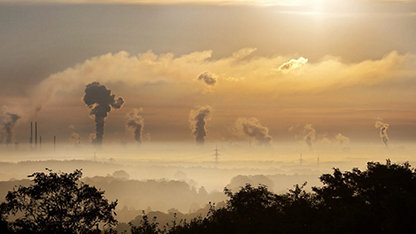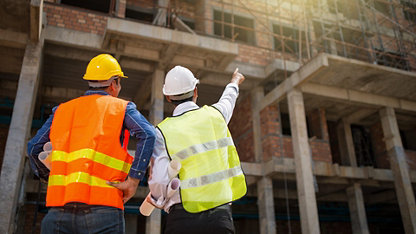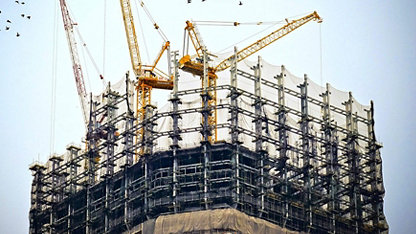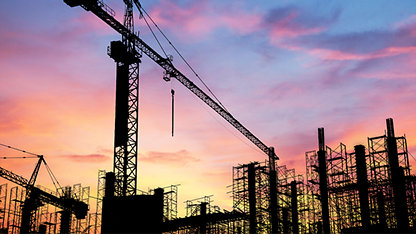By 2050, our sector needs to reduce its carbon emissions by 84 billion tonnes. It’s a big challenge, but the industry is responding.
The World Green Building Council (WGBC) and International Energy Agency have estimated that, to limit global warming to less than 2°C, the built environment sector needs to cut its carbon footprint by 84 billion tonnes. Emissions from existing stock must be reduced by 80%, and all new development must be net zero energy by 2050.
Meeting those targets would require a radical rethink, not just of how we build and refurbish, but also of how properties are funded, valued, procured and managed.
We may look back upon the first Buildings Day, held at the 21st Conference of Parties in Paris in December 2015, as the moment it all clicked. On this day, representatives of the global built environment sector met to agree a pathway to keeping global warming below 2°C. And the Global Alliance for Buildings and Construction – a network that brings together countries, cities and the building sector – was launched, with RICS as an initiating partner. Maintaining the sector’s momentum in helping to meet its goals will be crucial.
“As a minimum, investors have to assess carbon risk and whether it’s material to the assets they have. ”
Tatiana Bosteels
UN Environment Programme Finance Initiative
Setting higher standards within building codes provides certainty for investors and a level playing field, says Tatiana Bosteels, head of responsible property investment at Hermes Real Estate, and co-chair of the property working group at the UN Environment Programme Finance Initiative. “If everyone has to do it, it will be internalised into the investment models.
“As a minimum, investors have to assess carbon risk and whether it’s material to the assets they have,” Bosteels explains. “They may not have exposure, but no one can claim they didn’t know there was risk.”
Bosteels is a lead author of Sustainable Real Estate Investment, Implementing the Paris Climate Agreement: An Action Framework, which explains how investors can meet their fiduciary duty to manage environmental, social, governance and climate-related risks. In the future, further regulatory pressure will threaten to diminish the value of poorer-performing assets or make them obsolete, while rising energy prices and tighter carbon budgets will make inefficient buildings much more expensive to run. Longer term, there are the physical risks associated with climate change itself: the impact of extreme events on buildings or on the supply chain needed to service them.
Property professionals can make an important difference simply by asking whether these risks have been considered properly, says Roland Hunziker, director of sustainable buildings and cities at the World Business Council for Sustainable Development (WBCSD). “If we don’t ask certain questions, they don’t show up as risk. If you have to provide details and cannot, investors ask why. Asking the question drives the market to change.” Such concerns should support the growth of better-performing new buildings and underpin a business case for upgrading older stock.
Public opinion is also a powerful driver for action. At the Paris talks, 91 countries set building-specific targets within their emissions pledges and have to report on their progress every five years. WGBC chief executive Terri Wills predicts this openness will trickle down to the corporate sector. “People will reward those countries and companies that are moving ahead, and name and shame those that haven’t made good on their promises.”

Emissions from the built environment sector need to reduce by 80% which will require innovative solutions
Wills was struck by the way in which her home country of Canada was ridiculed by marchers at the UN Climate Summit in September 2014, when its prime minister failed to turn up. In the future, failure to act could influence the outcome of trade negotiations: “You may have countries that are meeting their goals who say they don’t want to work with countries that aren’t doing their part.” Countries could, in turn, blame companies for blocking the way. Meanwhile, corporates are much more aware that recruits would favour companies with a strong record on social responsibility. “As people see the impact of climate change worsen over the coming years, this will increase the pressure,” says Wills.
Transparency is also likely to become an important market driver at asset level, as smarter buildings make it possible to track energy consumption in real time. This live data would eventually replace labels such as energy-performance certificates or rating schemes such as BREEAM or LEED, that may bear little resemblance to actual consumption. “If you make information more transparent to people, they can make choices,” says Rebecca Pearce, EMEA head of sustainability at CBRE. “They might choose to take no action, but if they don’t have the information, they definitely can’t.”
In Australia, Pearce’s home country, the government made disclosure of energy ratings mandatory at sale, lease or sublease in 2010. “They didn’t say you have to have a minimum rating, just that you had to disclose it. So it was almost enforcing a market consideration of energy efficiency. Now there’s a self-sustaining market around having the most sustainable building that doesn’t depend on government legislation.”
In some emerging economies, electricity usage may not even be billed at the level of individual buildings, says Pekka Huovila, coordinator of the UN Sustainable Buildings and Construction Programme, led by Finland’s Ministry of the Environment. “In many cases, there may just be one meter for the whole block or group of buildings, so the individual consumer doesn’t see the impact of their own choices.”
Energy-efficient properties are not necessarily more costly to build, but costs can be distributed differently, says professor Thomas Lützkendorf, director of the Institute of Sustainable Management of Housing and Real Estate in Germany. “If you have a fixed budget for your house, it’s up to you whether you spend it on the envelope or on a beautifully designed bathroom,” he says. “My strategy is always to convince investors to invest first in the performance-related parts of a building such as the envelope or HVAC [heating, ventilation and air-conditioning] system.”
Costs will also be shifted to earlier in the construction process and the property life-cycle – investing more up front to reduce energy costs later, spending longer on the design or involving members of the supply chain at an earlier stage. Fundamental decisions on the orientation of a building may not add cost but they do need to be considered at the earliest stages.

Global carbon emissions 1811-2011
Huovila was involved in an office project in Nairobi where solar panels were installed at an additional cost of 3%. “But the payback period was between 2.5 and four years, and after that they would have free electricity for the 30 years to follow. Life-cycle thinking means not just investing for short-term profit. That is going to require some transformation in the mindset of clients.”
The availability of specific data on actual building performance should enable better design decisions, but there will also have to be a more integrated approach. In the past, many investors, developers, designers, builders, managers and occupiers handed off to one another with little communication between disparate links. The ideal scenario would be an industry that is a lot more collaborative, says Jennifer Clark, senior vice-president for green and corporate community investment at Skanska, with much earlier involvement from contractors and product suppliers: “It would be a lot more productive if the whole supply chain could sit around the table early on and work together.”
In order to embed sustainability into the process, it is critical that the commercial members of project teams take ownership of it. “I think the financial teams in each company need to roll up their sleeves and get a lot more involved with sustainability,” says Clark. “They need to take ownership of how it is reported, or how it is measured and turned into financial benefits.”
The WBCSD is also exploring ways in which property life-cycle thinking can be made more relevant for decision-makers. “It’s hard to drive a common vision when the investor and real estate communities speak a different language to [that of] the supply chain,” says Hunziker. “We need to learn how to translate technical language used to describe a building’s life-cycle into issues around risk and return.” The chief opportunity for professionals involved in costing and valuing buildings is to provide that translation, he adds..
For professionals seeking to translate sustainability into a compelling business case, help is at hand. In 2014, the WGBC published a report gathering together the evidence for how buildings affect occupants’ health and, crucially, productivity. It has gained market traction far more quickly than “green building” did – partly because wellbeing is a more positive message than avoiding a distant apocalypse – but also as it comes with a more eye-catching business case. Whereas energy accounts for 1% of a typical office occupier’s outgoings, staff costs account for 90%. Even a tiny productivity increase can affect an occupier’s bottom line.
Wellbeing is rising up the agenda for the occupiers of new offices, but it is potentially an even better argument for the refurbishment of existing buildings – 90% of which will still be occupied in 2050. The Renovate Europe campaign estimates that bringing EU property up to the right standard could cost an additional €150bn-€200bn a year.
“That investment is a massive opportunity to renew the building stock for the next generation and improve the quality of life of people living and working in our buildings,” says Adrian Joyce, campaign director of Renovate Europe and secretary general at EuroACE. “A properly renovated building, combining the right materials, technologies, equipment and controls, gives a much healthier indoor environment, which improves wellbeing and productivity.”
Lützkendorf believes that sustainability is often misunderstood as merely saving energy: “We also have to think about comfort and user satisfaction – so first of all we are making good buildings and happy inhabitants, and then thinking about reducing resource consumption and impact on the environment.”
Surveyors, valuers and advisers are best placed to hold these in balance and present them in a way that decision-makers can relate to. Lützkendorf and his fellow professor at Karlsruhe, David Lorenz FRICS, are working with Ursula Hartenberger, RICS global head of sustainability, to develop training for valuers to integrate energy performance into economic valuations: “The [RenoValue] training shows that the valuer is a key stakeholder,” says Lützkendorf. “If you convince one valuer, they will convince 100 of their clients.”













